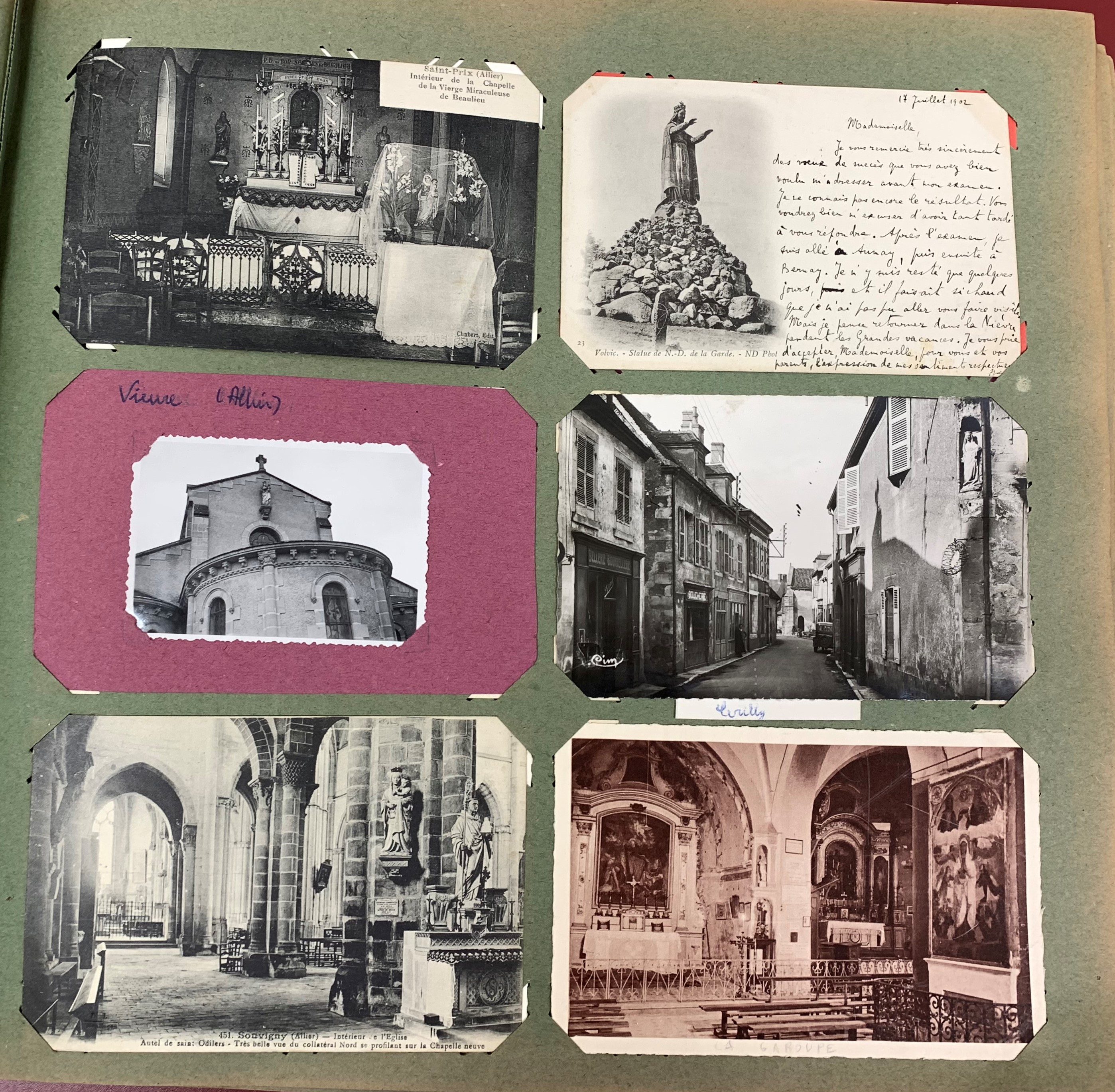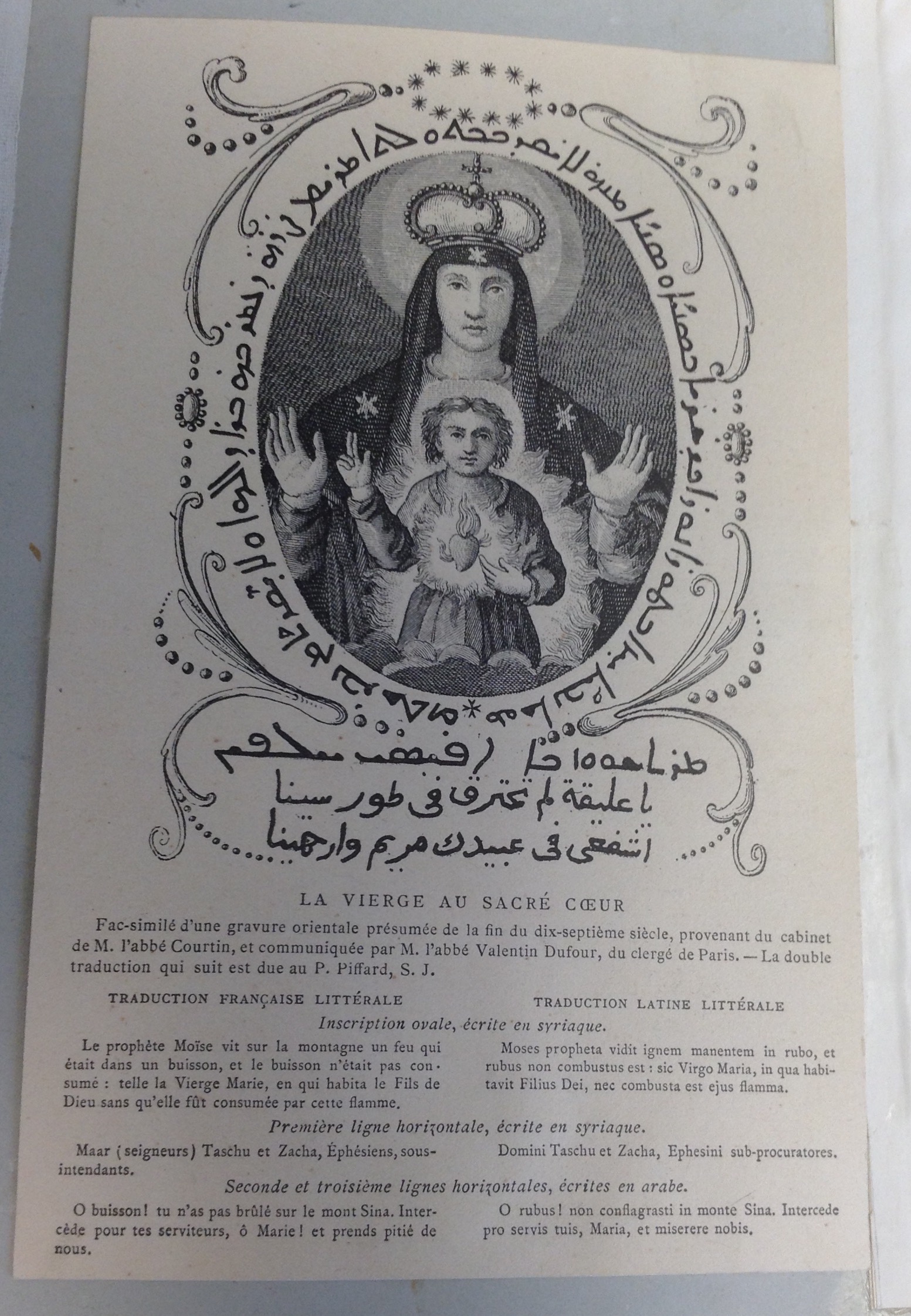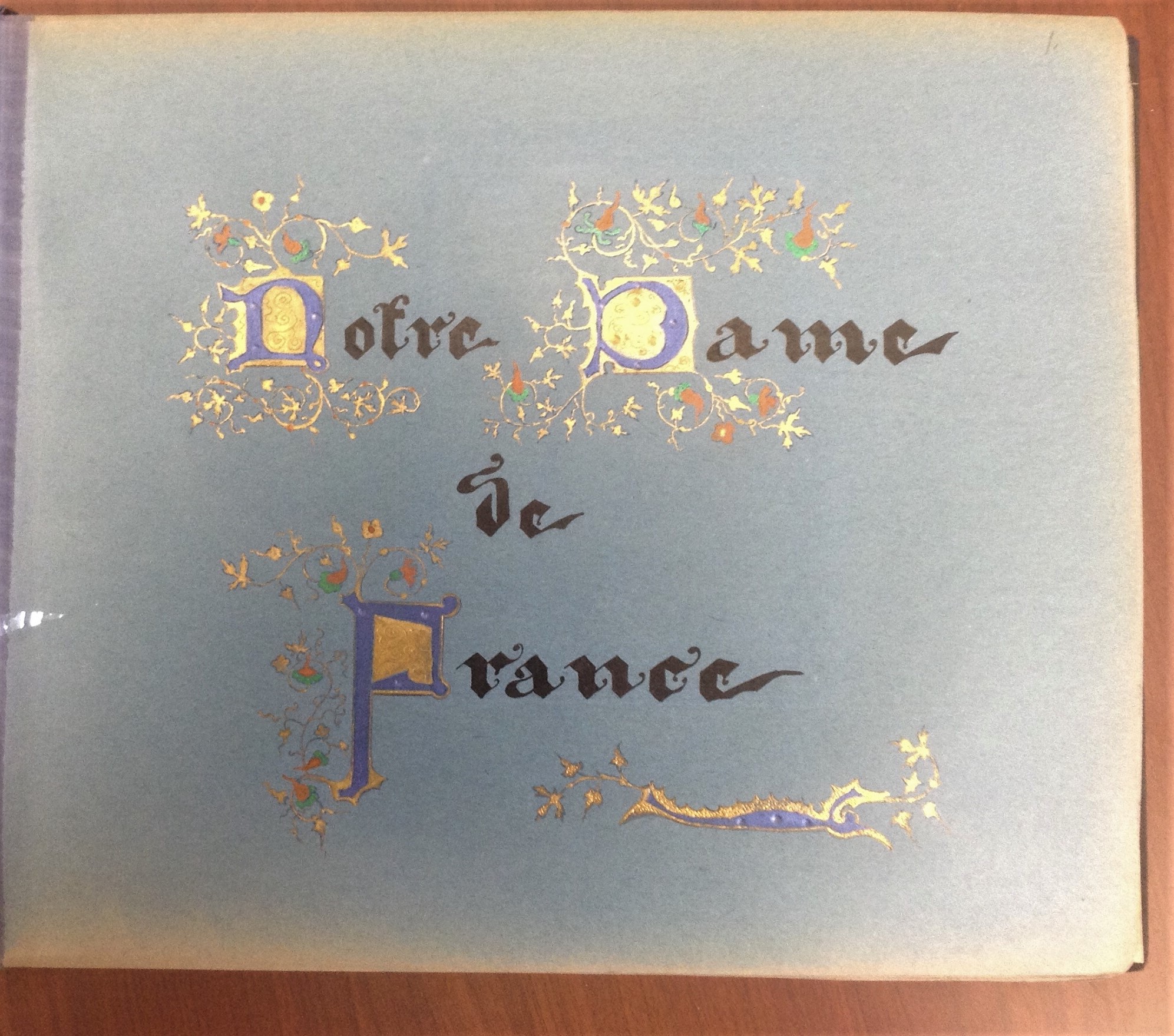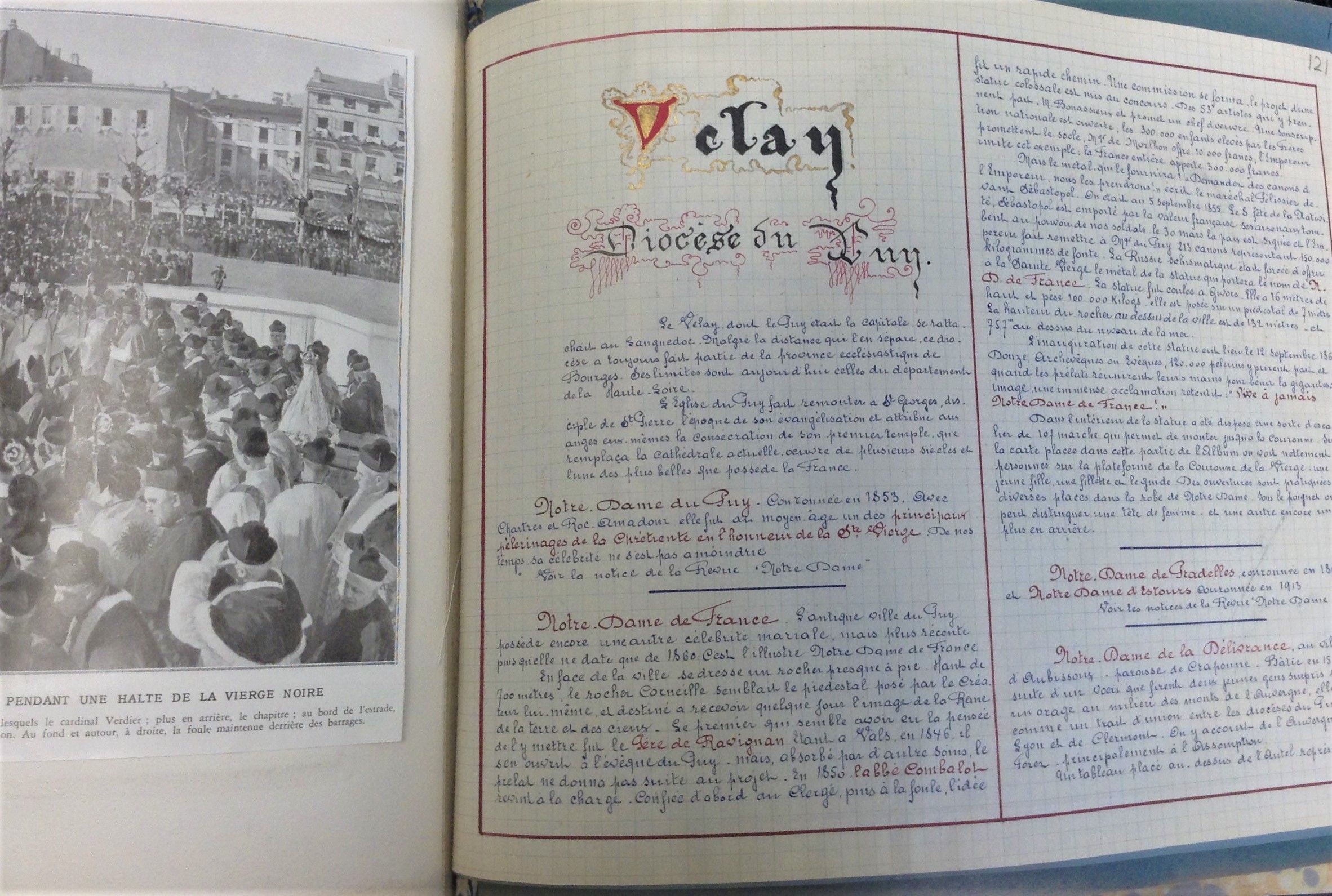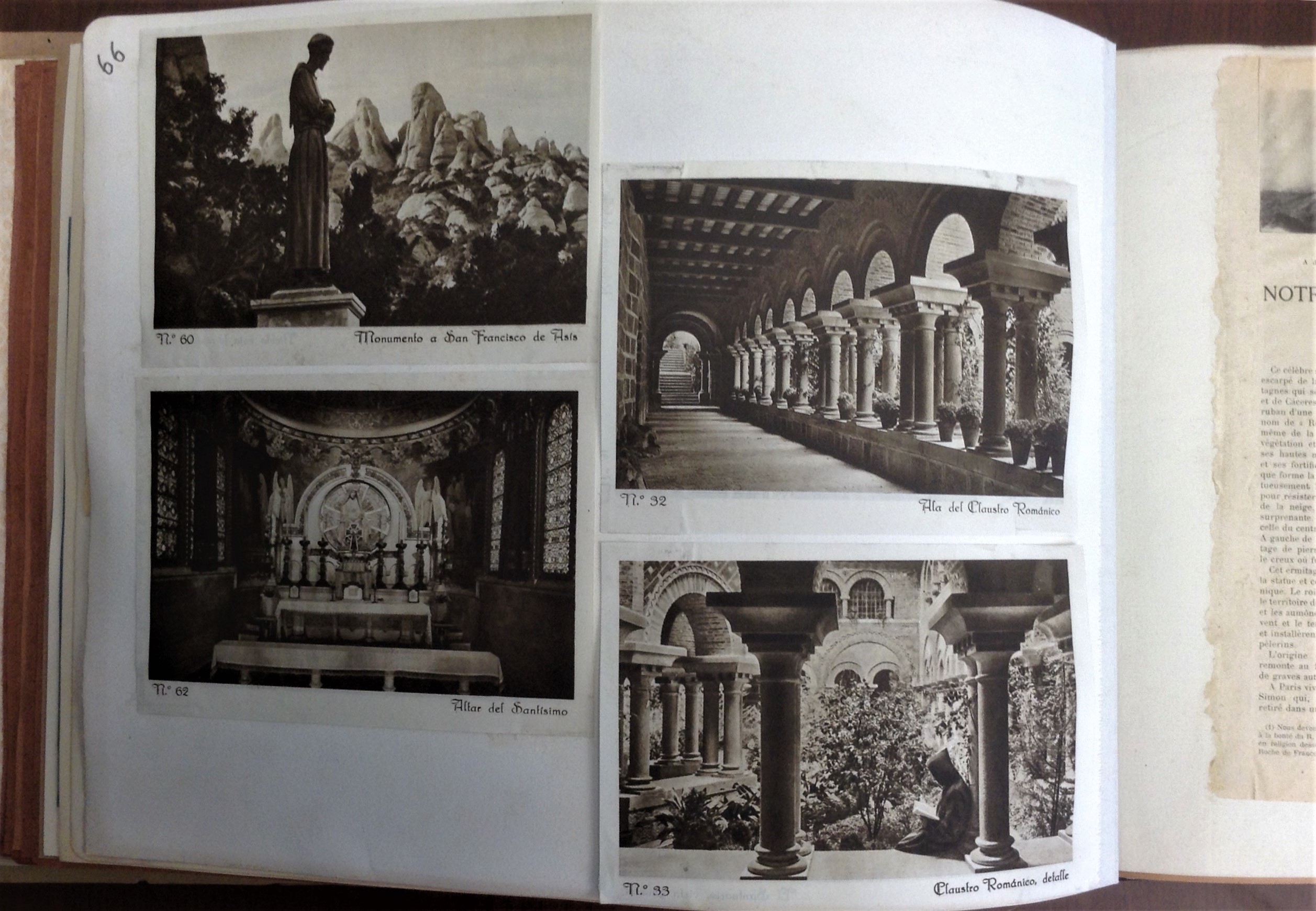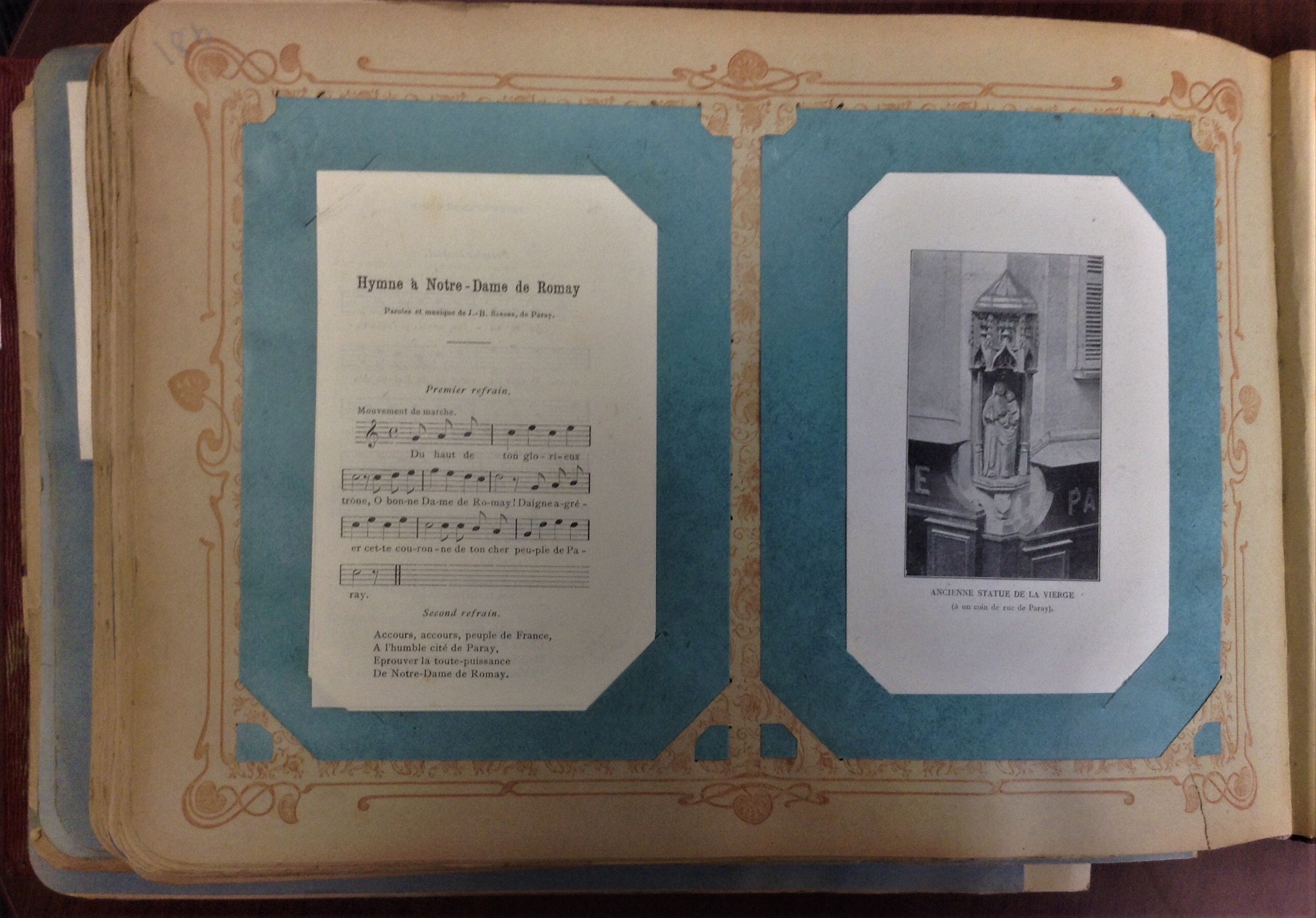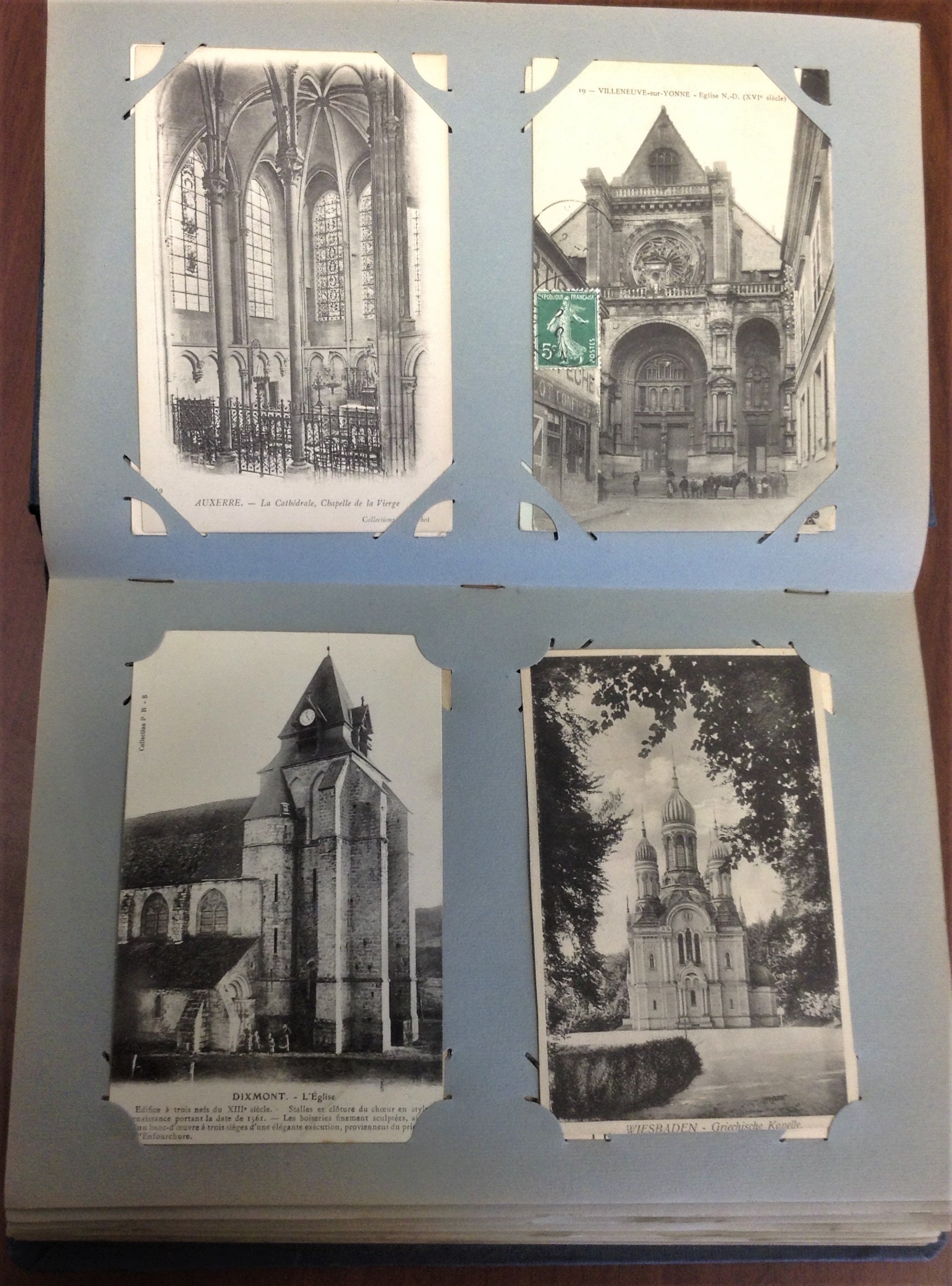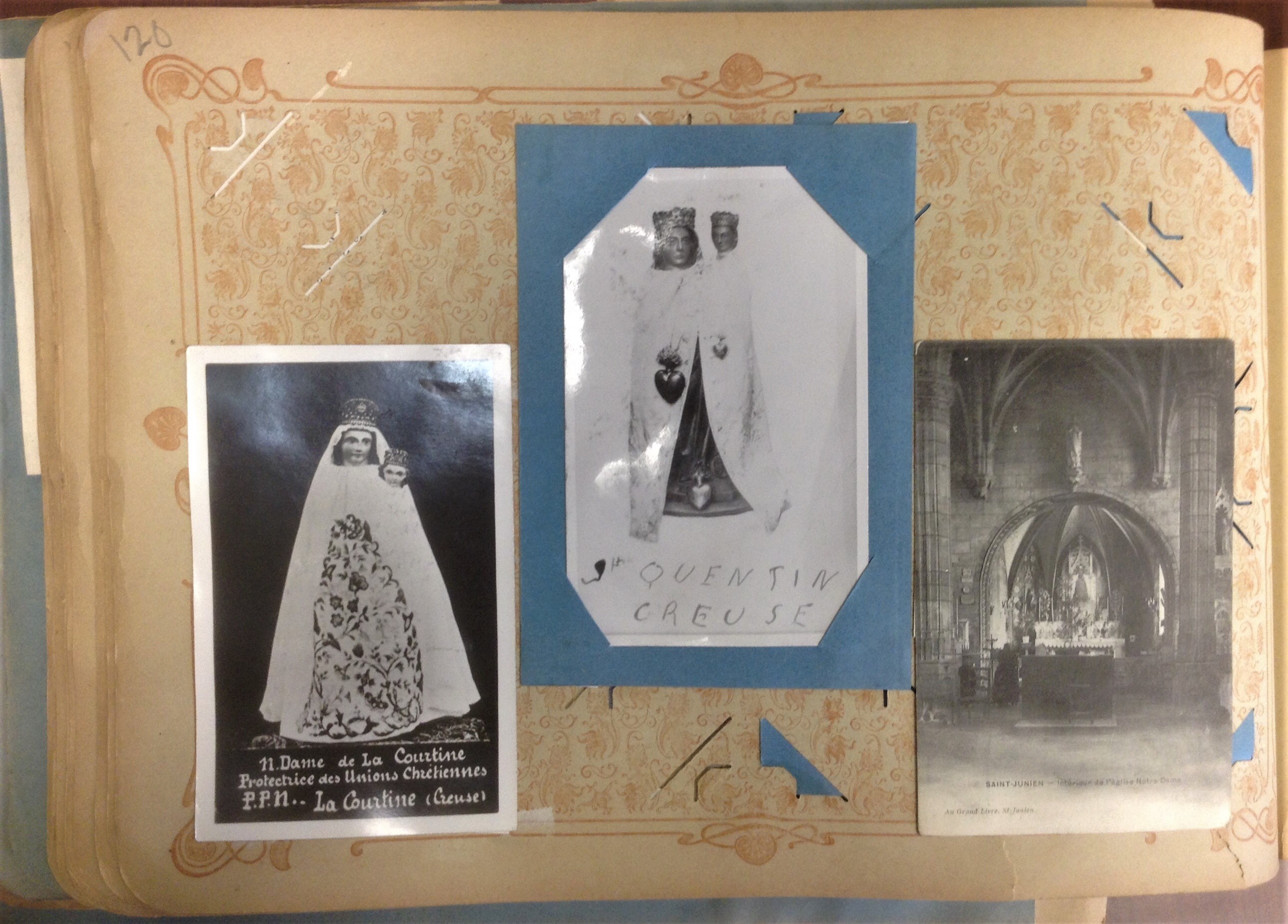Blogs
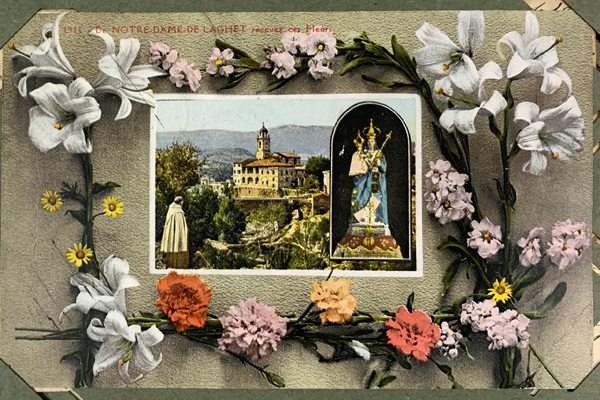
French Abbey’s Albums: Archivists’ Efforts Today Reward Researchers of Tomorrow
By Kayla Harris
Librarians and archivists in the Marian Library have undertaken the processing of a fascinating and visually rich collection of 67 albums and scrapbooks from an abbey in Poitiers, France.
Filled with photographs, clippings, postcards, maps, holy cards and illustrations, the albums from the Benedictine Monastery of Sainte-Croix at Saint-Benoît, were donated to the Marian Library archives in the early 2000s. In a best-case scenario, an archival collection comes with background information from the donor about the scope of the materials, such as date ranges or the type of content included. This information is helpful because it is used by the archivist to create a detailed finding aid that assists researchers in navigating the collection. However, it is very common for collections to be donated without context; such was the case with these albums.
Who were the sisters who assembled these albums? Why did they make them? Did they travel to the locations, or was the scrapbook a way for them to imagine this travel? It is up to the archivist and researchers to make inferences about the material through closer analysis. For example, one postcard in the image gallery below has a date of 1902. Architectural styles and other details in the images serve as additional evidence.
An archivist’s first step after receiving a donation is to create a brief accession1 record, documenting the receipt of the collection. Archives often contain many collections that are both processed (described and organized) and unprocessed. The accession record lets researchers know that a collection exists, even though it hasn’t yet been fully described and organized.
The Marian Library and the other two special collections at the University of Dayton — University Archives and Special Collections and the U.S. Catholic Special Collection — use the web-based platform ArchivesSpace. Researchers can browse the records for collections that are already processed, as well as those that have been received but are not yet fully organized.
Next, safe storage is important. In this instance, the albums were moved to the Marian Library’s special collection storage suite on the third floor of Roesch Library, where a Liebert HVAC unit maintains consistent temperature and humidity. Temperature, humidity and light are the most damaging environmental factors for collections. Maintaining consistency of these conditions prevents outbreaks of mold, tearing of brittle paper and fading of colors; in doing so, it helps ensure that these archival collections will be accessible by researchers in the future.
The albums are stored flat, as opposed to vertically like most books on bookshelves. With all of the clippings on each page, the albums are very heavy and put too much pressure on the spine if stored upright. While storing the albums flat is better for their condition, it does take up more of the limited shelf space available in the special collections storage suite.
After securing safe storage, the next step is to go through each album and provide more detailed information about its contents in a finding aid. While the majority of the albums focus on Marian shrines and other holy sites throughout France, one album also includes material from Belgium, Spain, Portugal and other European countries. Though the description process is time-intensive, it will mean that future researchers won’t have to look through all 67 albums to find material about a particular location that they are interested in.
A finding aid also generally include any information from the donor, but since these albums do not have any, further research will be needed on the monastery and the sisters who lived there at the time these were created.
Though nearly all of the text in the albums is in French, one does not need to understand the language to analyze the material. Since the albums are filled with so many images, they provide ample content for further study by students, researchers or anyone interested in Marian devotion. If funds become available in the future, elements of this collection will be digitized to improve access to researchers worldwide.
Though the finding aid is still in process, its preliminary information is publicly accessible and lists the locations included in the first 18 albums.
The gallery below provides a glimpse into the diverse objects in these carefully assembled albums. When the Marian Library reopens to the public, visitors are welcome to peruse the albums. To schedule a visit, call 937-229-4214 or email marianlibrary@udayton.edu.
— Kayla Harris is an assistant professor and a librarian/archivist in the Marian Library.
1 The Society of American Archivists defines an accession as, “Materials physically and legally transferred to a repository as a unit at a single time; an acquisition.” https://dictionary.archivists.org/entry/accession.html

